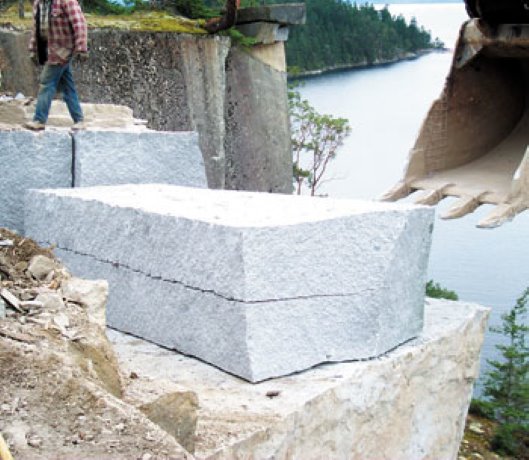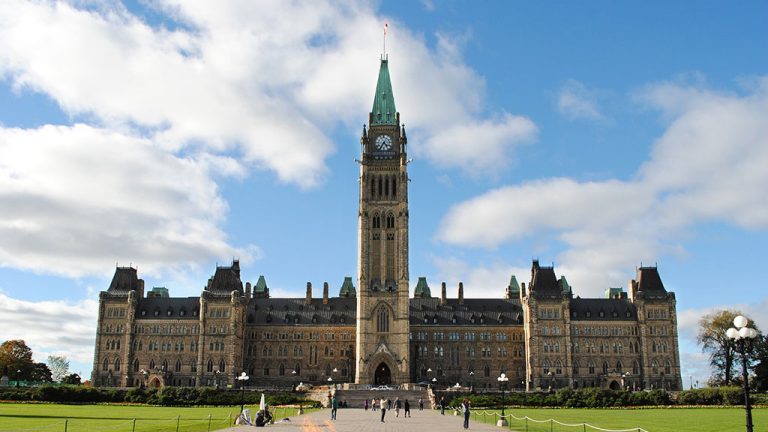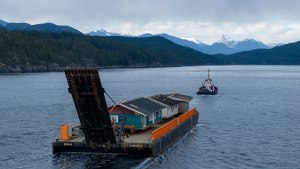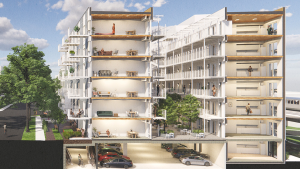A stone product known as Natural Stone Thin Veneer (NSTV or NTV) is breathing new life into stone construction and quarries in British Columbia, some of which date back to the 19th Century.
A stone product known as Natural Stone Thin Veneer (NSTV or NTV) is breathing new life into stone construction and quarries in British Columbia, some of which date back to the 19th Century.
“In the last six years there has been a revitalization and people realize they can get real stone for just about the price of fake stone – there’s maybe only a 10 or 20 per cent difference,” said Eric Van den Kerkhof of Adera Natural Stone Supply.
The veneer’s rising popularity has given suppliers like Adera the option of offering a greater variety of products and price points, as buyers opt for rock or a slice of it.
NSTV utilizes a concept much like wood veneer, only stone is sliced one to 1.5 inches in thickness and the product is then mortared into place with a rough face on the exterior.
Machines are also able to cut right-angled corner pieces to complete a building’s look.
The veneer’s light weight makes it applicable for interiors, exteriors and in landscaping.
“There has definitely been a resurgence in stone use,” said Nathan Raymond, operations manager for Bedrock Granite Sales Ltd., which sells the classic salt-and-pepper Hardy Island granite.
Hardy Island granite blocks form the stepping stone cubes leading to the water in front of the Olympic Village, plus granite cobblestones form its streets.
“If you go to UBC, 90 per cent of the granite buildings that have gone up (in the past eight years) have been supplied by us,” said Raymond.
Bedrock also operates a basalt quarry in the Squamish area, one of two that supplies the construction industry.
NSTV has also edged out fake stone because of durability.
“Cultured stone has really paved the way for veneer,” said Raymond.
Synthetic stone fades with time while real stone veneer can be pressure washed and won’t change color.
While NSTV is leading the latest resurgence, stone construction was dormant for half a century in B.C.
“At the turn of the century, stone was king as a building material,” said Helgi Sigurgeirson, partner with Nathan’s father Greg in the Hardy Island Granite quarry.
B.C. shipped stone down into the U.S. The Great Depression quelled construction and after the Second World War, steel and concrete dominated.
In the 1980s, stone was in demand again. Sigurgeirson said that a plethora of old B.C. quarries started back up, only to close again.
“A lot of them failed. This is a tough business,” he said.
Quarries today produce mainly granite, andesite and basalt for construction. Sandstone, once popular, is no longer available as quarries are abandoned or covered by recreational homes on the Gulf Islands. Newcastle Island off Nanaimo supplied sandstone for the U.S. Mint in San Francisco in 1869 and later for the B.C. Penitentiary, Nanaimo’s post office and courthouse, banks, and St. John’s Church in Victoria.
However, Sigurgeirson said Bedrock is awaiting permitting on a sandstone quarry in the near future.
Quarries divide into two categories – those able to supply large blocks (mainly along the volcanic rift on B.C.’s coast) and those cutting smaller stones or shale-like material.
The two historic quarries supplied stone on B.C.’s Coast.
Haddington Island Quarry was re-opened in 2004, by Adera, after operating from 1896 to 1966. It produced andesite, which was used to construct the B.C. Legislature, Royal British Columbia Museum, Vancouver City Hall, the Empress Hotel and heritage bank buildings in Victoria and Vancouver, including the Bank of Ottawa.
Hardy Island Granite Quarry, originally opened in the early 1900s and peaking in production in 1915, was re-opened in 1999 by Bedrock.
It supplied the Ogden Point breakwater with 125,000 tons of granite in 1915, B.C.’s largest dimension stone project.
It’s currently the Pacific Northwest’s largest producer of granite blocks. Since re-opening, the quarry has shipped more than 28,000 tons of blocks to processors and distributors in B.C. and Washington.
The stone lions on the Vancouver Art Gallery are carved from the classic black and white granite.
Sigurgeirson said the LEED designation of buildings is helping bring more stone into structures, albeit veneer or regular stone cuts. And, it has caused buyers to look at where the stone is coming from.
“Our main competitor for granite is China,” he said.
In the past, contracts like the Stanley Park seawall repair were lost to Asian suppliers.
“When you ship something across the ocean, that’s hardly a green alternative,” he said.











Recent Comments
comments for this post are closed